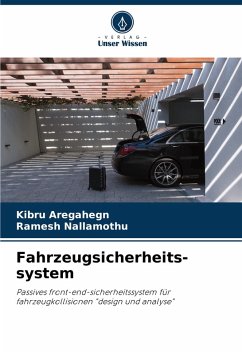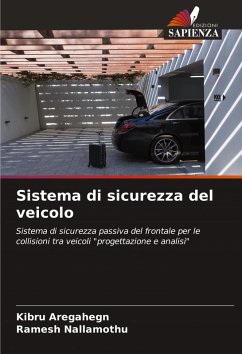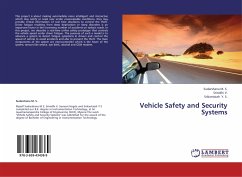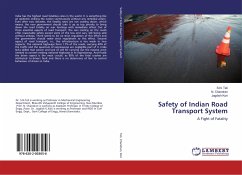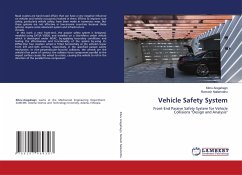
Vehicle Safety System
Front-End Passive Safety System for Vehicle Collisions "Design and Analysis"
Versandkostenfrei!
Versandfertig in 6-10 Tagen
45,99 €
inkl. MwSt.

PAYBACK Punkte
23 °P sammeln!
Road crashes are hard-nosed affairs that can have a very negative influence on vehicles and vehicle occupants involved in them. Efforts to improve road safety, particularly vehicle safety, have been made in numerous ways. But these systems are not effective in low-income countries because these systems require some advanced system and infrastructureinroads. In this work a new front-end, the passive safety system is designed, modeled using CATIA V5R20, and installed on a Geo-Metro sedan vehicle which is developed under NCAC, by applying boundary conditions and testing the effectiveness and func...
Road crashes are hard-nosed affairs that can have a very negative influence on vehicles and vehicle occupants involved in them. Efforts to improve road safety, particularly vehicle safety, have been made in numerous ways. But these systems are not effective in low-income countries because these systems require some advanced system and infrastructureinroads. In this work a new front-end, the passive safety system is designed, modeled using CATIA V5R20, and installed on a Geo-Metro sedan vehicle which is developed under NCAC, by applying boundary conditions and testing the effectiveness and functionality of the system by using LS-DYNA.One free rotation wheel is fitted horizontally at the vehicle's lower front left and right corners, respectively, in the specified passive safety mechanism. In non-perpendicular forward collisions, the wheels are the vehicle's first point of contact; the collision force component parallel to the impact surface causes the wheel to rotate, causing the vehicle to roll in the direction of the parallel force component.





